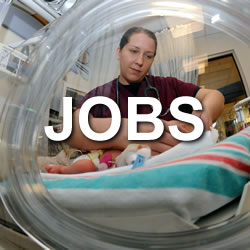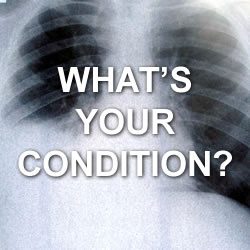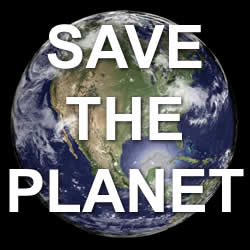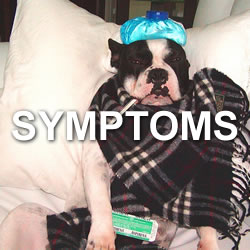Sunburn
Sunburn is very becoming, but only when it is even - one must be careful not to look like a mixed grill - Noel Coward

image by: tara hunt
HWN Suggests
The science of sunburns
It's summer. That means many people are going experience a sunburn, at one time or another.
You probably already know that sunburns are caused by exposure to the sun's ultraviolet (UV) light and can be prevented by sunscreen. But you might not know that sunburns are actually your skin's defensive response to damage from this UV light, and that the most common remedy (aloe vera) has never been proven to be effective in relieving sunburn.
Given that sunburns are such a mundane phenomenon, it's surprising how many questions and misunderstandings are out there. Here's a fuller explanation.
What causes a sunburn?
In short, what we think of…
Resources
 UV Index
UV Index
The UV Index provides a forecast of the expected risk of overexposure to UV radiation from the sun. The National Weather Service calculates the UV Index forecast for most ZIP codes across the U.S., and EPA publishes this information. The UV Index is accompanied by recommendations for sun protection and is a useful tool for planning sun-safe outdoor activities.
 UV Index App
UV Index App
The UV Index provides a daily and hourly forecast of the expected intensity of ultraviolet (UV) radiation from the sun. Some exposure to sunlight is enjoyable. However, too much sun can be dangerous.
 The only sunburn remedies that actually work
The only sunburn remedies that actually work
Help your skin heal with these tips from a dermatologist.
 How Screwed Am I From Bad Sunburns I Got as a Kid?
How Screwed Am I From Bad Sunburns I Got as a Kid?
About one in five Americans will develop skin cancer during their lifetime.
 No safe suntan, but research suggests there may be a way to reduce ‘old leathery’ look
No safe suntan, but research suggests there may be a way to reduce ‘old leathery’ look
Getting a tan may not depend on how much sun people get, but rather when they get it. This is the finding from a new international research project. The study, published in Molecular Cell, found that sun exposure every other day was more effective for tanning and caused less DNA damage than daily exposure.
 The Parts Of Your Body That Are Most Vulnerable To Getting Sun Damage
The Parts Of Your Body That Are Most Vulnerable To Getting Sun Damage
t’s the season of scorching summer rays and awkward sunburns, which means people are generally more cognizant of putting on sunscreen when they go outside. But if you’re not lathering up enough at the beach or by the pool, you’re likely to get sun damage in a few places ― even some surprising ones.
 These Common Meds Could Make You More Likely to Get Sunburned
These Common Meds Could Make You More Likely to Get Sunburned
I kept wondering what had changed to cause me to burn so badly.
 Watch Out For Sunburns Even When The Weather Still Feels Wintry
Watch Out For Sunburns Even When The Weather Still Feels Wintry
Even though it’s hotter in September than April, the sun is just as high in the sky and you’re just as susceptible to sunburns if you’re prone to them and not careful.
Beating the Burn Naturally: 16 Home Remedies for Sunburns
Treating a sunburn doesn’t have to mean a trip to the pharmacy, though, here are some effective home remedies and common sense techniques to ease your pain and heal the damage after getting burned.
Explainer: what happens to your skin when you get sunburnt?
UVC is mostly absorbed by the earth’s atmosphere, but UVA and B rays reach the ground and can penetrate unprotected skin. UVB penetrates the epidermis, the top layer of the skin, while UVA goes deeper.
Fact or Fiction?: A "Base Tan" Can Protect against Sunburn
As the weather warms, many of us would prefer to look like we passed our winter days lounging by the pool instead of hunched before a computer screen or lab bench. But soaking up the rays to acquire a so-called “base tan” does not fool the sun or a tanning bed. Simply put, the benefits of being sun-kissed are not even skin-deep.
First Aid: Sunburn
Concise instruction sheet for sunburn in kids.
How SPF Ratings Can Do More Harm Than Good
The system for preventing cancer is misunderstood and misleading.
Nine Ways to Deal With Sunburns From Idiots Who Have Been There
Do you have a sunburn? You dummy. Let me ask you a question: How long have you had your body? Is it new? Hmm, maybe you just got your body this year. Did you just get your body this year? Or, I don’t know, maybe you got it two or three years ago, and—hah, ahh, so embarrassing—you forgot about the thing where your skin needs goddamn sunscreen if you’re going to take it outside in the sun you idiot?!
Soothing Sunburns and Sun-Tired Skin
Getting sun is good, it’s the best source of vitamin D–so get out there, just start in small steps and be aware that you can still burn in little time even on overcast days. Having a fair-skinned, freckled daughter who loves to be outside has helped me become even more aware of the sun’s power and how quickly it can damage us. Here are a few tips.
Sun-Sensitive Drugs (Photosensitivity to Drugs)
Individuals with phototoxic reactions may initially complain of a burning and stinging sensation. Then the redness typically occurs within 24 hours of the exposure to sun in the exposed areas of the body such as the forehead, nose, hands, arms, and lips.
Sunburns Aren't Just a White-People Problem
A new study conducted in everyone's preferred spring break destination shows that young people who identify as nonwhite are prone to getting sunburned. This is a bad scene considering that regular burns greatly increase risk of skin cancer. While melanoma, the most dangerous type of skin cancer, is more common in caucasians, it's more deadly in people of color.
Sunburns During Teen Years Significantly Increase Melanoma Risk
After spending the past several months cooped up in classrooms, millions of teens are ready to have their fun in the sun as the school year comes to a close. However, not to be a buzzkill, but they shouldn’t have too much fun under the sun.
Sunscreen Wars
It's summer, and that means one thing. Time for the sunscreen wars. Ask your kids why they hate having you put sunscreen on them and they'll spit their reasons out like seeds in a watermelon eating contest...
There's A Wearable Device That May Help Prevent Skin Cancer
Worried about getting a sunburn? Swap your Fitbit for June. June is a wearable device that looks like a jeweled bracelet and bills itself as a "beauty coach that will help you fight a major source of skin-aging: UV." At $129 each, it comes with a UV sensor, has a battery life of about a year and pairs with an iOS app that gives users a daily forecast and expected UV index.
Watch How You Can Heal And Cover Up Your Sunburn At The Same Time
There is no shortage of information warning against sun damage or products to prevent it from happening. Still, no matter how cautious you are about skincare, getting a sunburn is a reality of summer. Aloe and other treatments are helpful in making us feel better, but what about looking better? Hearing people tell you over and over again how burned you are can get pretty old. Thanks to this tutorial by Blue Dressed Beauty, you can learn how to heal your sunburn and cover it at the same time.
What Actually Happens When You Get A Sunburn
Without proper protection, like sunscreen, clothing and shade, the sun's ultraviolet rays can have damaging effects on the skin -- the most immediate, perhaps, being the dreaded sunburn.
What Are the Best Home Remedies for Sunburn?
Here’s what to grab from the medicine cabinet, or the kitchen, for relief.
What happens when skin gets sunburned?
Your body can deal with some of the damage from a sunburn. But if you suffer too much damage, the repair system can’t keep up and your body starts to shed that damaged DNA. That’s what causes the skin to peel after a bad sunburn.
 The science of sunburns
The science of sunburns
Given that sunburns are such a mundane phenomenon, it's surprising how many questions and misunderstandings are out there. Here's a fuller explanation.
10 Tips For Treating A Bad Sunburn
You were out on the boat all day, you forgot to reapply sunscreen and before you knew it, you scored a nasty sunburn. Or maybe you were just mowing the lawn for an hour -– maybe it was even cloudy -– and it didn't even cross your mind to put on sunscreen. Now you're scorched.
Skinsight
At Skinsight you have access to some of the best medical images in the world. We believe images combined with expert-written knowledge will help you better identify and understand a health concern than by simply using words.
DermNet NZ
It is now clearly apparent that the long-term consequences of overexposure to the sun or other sources of UV radiation are significant. One blistering sunburn is said to double the likelihood of developing skin cancer.
eMedicineHealth
A Skin Cancer Foundation survey found that half of all adults reported at least one sunburn in the past year. One or more blistering sunburns in childhood or adolescence more than double a person's chances of developing melanoma later in life, according to the Skin Cancer Foundation. Moreover, a person's risk for melanoma doubles if he or she has had five or more sunburns at any age.
MedlinePlus
Sunburn results when the amount of exposure to the sun or other ultraviolet light source exceeds the ability of the body's protective pigment, melanin, to protect the skin. Sunburn in a very light-skinned person may occur in less than 15 minutes of midday sun exposure, while a dark-skinned person may tolerate the same exposure for hours.
NHS
Sunburn is skin damage caused by ultraviolet (UV) rays in sunlight. With too much exposure to UV light, your skin overheats and becomes red and painful, and may later peel or blister.

Introducing Stitches!
Your Path to Meaningful Connections in the World of Health and Medicine
Connect, Collaborate, and Engage!
Coming Soon - Stitches, the innovative chat app from the creators of HWN. Join meaningful conversations on health and medical topics. Share text, images, and videos seamlessly. Connect directly within HWN's topic pages and articles.














